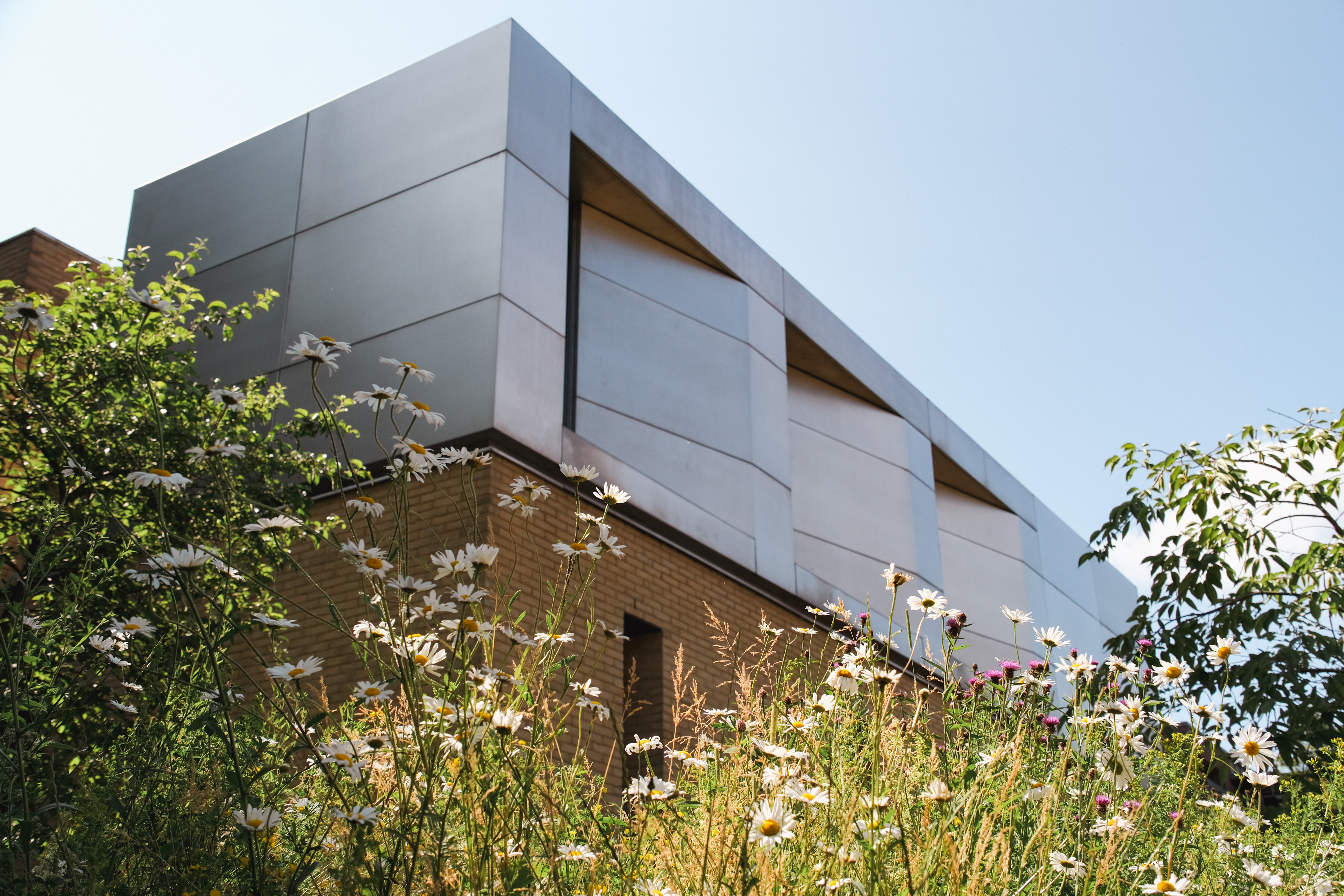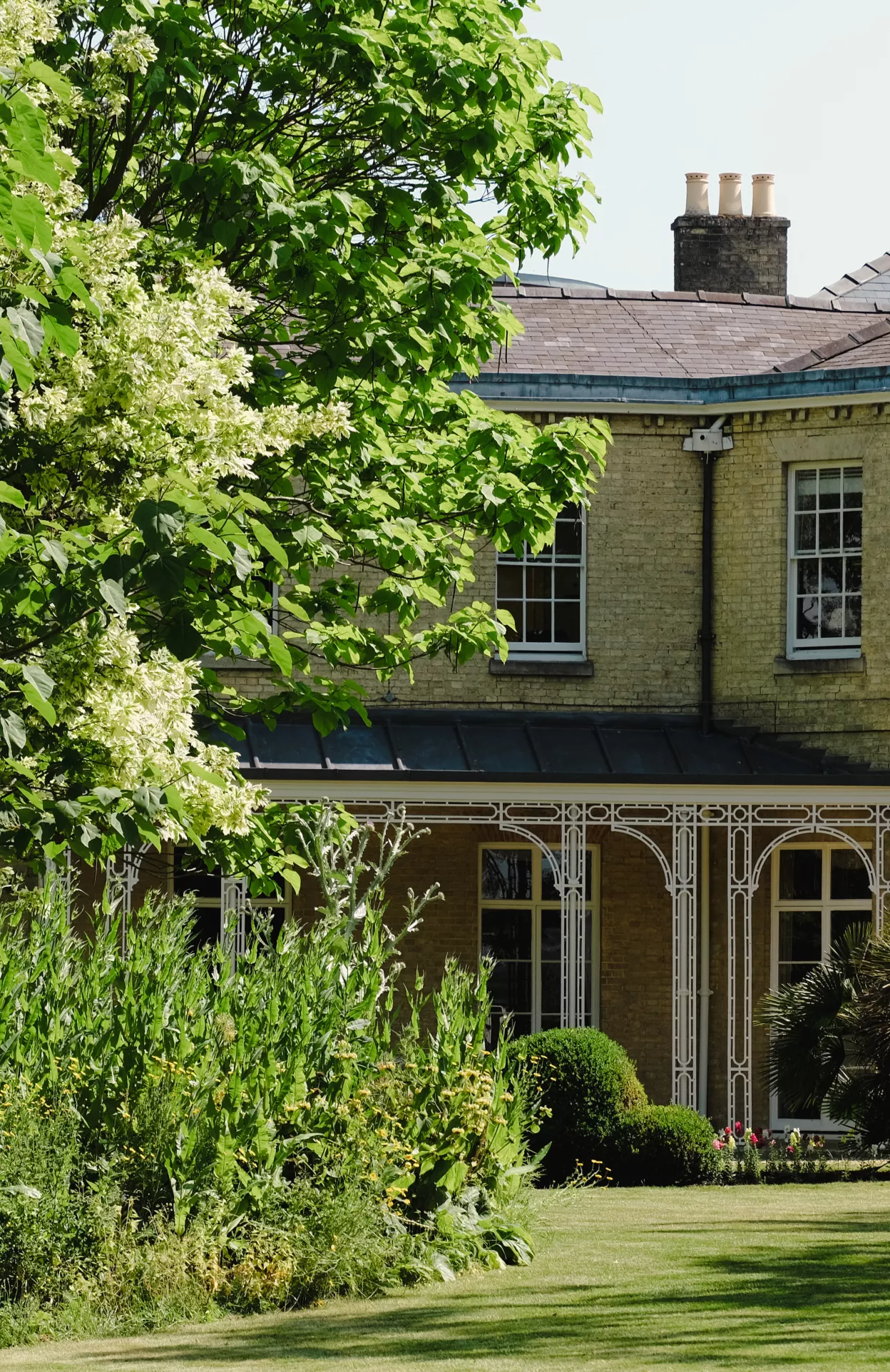The Fitzwilliam Gardens
For many, Cambridge colleges mean expansive lawns and rather forbidding notices. That isn't the case at Fitz. While we do have a number of beautiful lawns (which you can walk on!), we get most excited about our borders, our potager and the cultivation of interesting plants.
Throughout the seasons, Fitz changes the form and function of our gardens. In autumn, we harvest pumpkins and squash, in spring we enjoy the explosion of green from our extensive trees, and in summer, as the roses flourish in the sunshine and the wild flower meadow sways in the breeze, the potager thrills with artichokes, peppers, courgettes, lettuces...
Our Head Gardener, Steve Kidger, is passionate about sustainability, and his team's shift aware from relying on herbicides and pesticides towards more sustainable methods have helped us secure University environmental awards:
When Professor Lethbridge took on the mastership in 2005 we established a kitchen garden adjacent to the Master’s Lodge garden, with the intention of supplying fresh herbs and vegetables for the house. From the start we based the style of the kitchen garden on a French potager, mixing ornamental plants - flowers - with the productive - vegetables.
"This type of planting style offers several benefits, in that the vegetable garden becomes more than just an allotment but can be viewed as a decorative addition to the wider garden. Interspersing flowering plants among the vegetables draws in pollinators to help set fruit and beneficial insects like ladybirds and hoverflies to assist us in controlling pests, particularly helpful as we pursue an organic approach to gardening. This garden style was first incorporated into the College grounds with the establishment of the Fitzwilliam Community Allotments at Wilson Court in 2015. These raised beds have provided green-fingered college members with an opportunity to cultivate their own plots.
The extensive damage to New Court lawns experienced in 2018 from a Chafer beetle infestation has provided an opportunity to bring the skills and experience of managing a potager into the College grounds. We have used a more formal geometric arrangement utilising box hedging to define the rectangular planting spaces, inspiration having been taken from the formal gardens of Villandry in the Loire Valley. This garden style, together with extensive wildflower planting, have not only transformed the aesthetic of New Court but are also examples of how small steps can be taken to address environmental concerns about biodiversity and sustainability.
So...if you time your visit to Fitz well, you may get to enjoy some very local produce indeed.
A guided walk around the gardens
Storey’s Way entrance and Gatehouse Court
The College entrance is flanked by ‘living barbed wire’, Colletia cruciata. In summer the beds come alive with devil’s tobacco and red hot poker. Inside the Court, Primula and Dicentra nestle among ferns. In autumn, Cyclamen flower under the copper beech.
Sunken Garden
Best seen from the bridge, this ‘planted moat’ uses fountain grass and blue Agapanthus ‘Midnight Star’ to mimic water. Plum-coloured Pittosporum ‘reflects’ the purple crown of the copper beech.
Lime Tree Avenue
The old path is lined by century-old limes. In spring, grassy banks erupt with squills, glory of the snow (Chionodoxa luciliae), snake’s head fritillaries (Fritillaria meleagris) and wild daffodils.
Wilson Court
A summer border lies hidden behind Wilson Court, along the boundary with Murray Edwards College. Euphorbia mellifera lines the path towards Gatehouse Court and the Japanese maple (Acer palmatum ‘Sumi-nagashi’) is a point of focus in front of Y staircase.
‘The First Undergraduate’
Old box trees and a huge oak shade this bronze by Christopher Marvell, commissioned for the College’s 125th anniversary. In spring, the ground is covered by woodland perennials and hellebores. The canopy is of limes, yews, false acacias and horse chestnut.
The Grove
The plane tree (Platanus hispanicus) between the Chapel and The Grove is over 200 years old. In Edwardian photographs the tree is just as large. The climbing rose and snail-shaped topiaries by the veranda are newer additions. The sundial parterre contains cottage-style planting of English sage and heliotrope. The Acer ‘Drummondii’ on the Copse border was planted by the King and Queen of Spain.
Olisa Library planting
Head Gardener Steve Kidger and his team have created an entirely new landscape around the Olisa Library. Rudbeckia and pampas grass follow the tower’s curve. The triangular bed holds wedding cake trees (Cornus controversa ‘Variegata’), Echinacea for summer colour and tussock grass for winter structure. Behind the library a meadow attracts wildlife and insects, and is planted with native trees including Scots pine. A Blue Tit has already adopted the nest box on the walnut tree.
Tree Court
In 1883, Emma Darwin wrote “I never saw such a display of primroses ... especially under each of the beech trees; they were like a carpet”. The beeches still stand; new planting includes wood-rush (Luzula sylvatica) and Brunnera macrophylla ‘Jack Frost’. The lawn holds English and North American oaks, and is edged by Gypsophila and pink bell-shaped buds of beauty bush (Kolkwitzia amabilis).
Fellows’ Court
Outside N staircase is a Ginkgo biloba, a primeval species 270 million years old.

New Court
Blocks of wildflowers punctuated by spring bulbs boost biodiversity, attracting pollinators and wildlife into the garden as well as adding a splash of early summer colour. The 'potager' with its mix of vegetables and flowering plants, demonstrates the ability of a garden to be both productive and ornamental.

